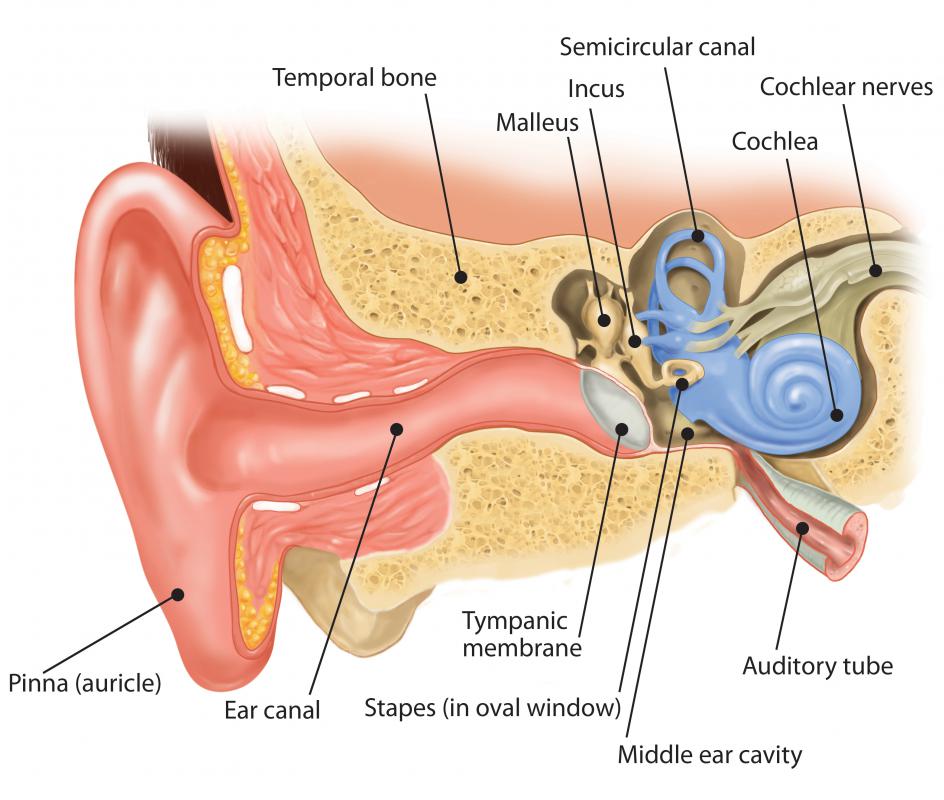At WiseGEEK, we're committed to delivering accurate, trustworthy information. Our expert-authored content is rigorously fact-checked and sourced from credible authorities. Discover how we uphold the highest standards in providing you with reliable knowledge.
What are Otoacoustic Emissions?
Otoacoustic emissions are sounds which originate from inside the ear. Researchers had hypothesized that such emissions occurred since the early 20th century, but they weren't confirmed until the 1970s, when scientists finally had equipment sensitive enough to register otoacoustic emissions. In addition to being of general interest, otoacoustic emissions are also of clinical significance, because they can be used to assess the health of the ear.
Researchers break these sounds up into two broad categories: spontaneous and evoked otoacoustic emissions. Spontaneous emissions occur in the absence of an external stimulus, while evoked emissions are generated in response to sound. Evoked emissions can be triggered with short tones and bursts of found in transient emissions, generated in response to sustained tones in sustained frequency emissions, or arise in response to two conflicting tones in distortion emissions.

These emissions arise in the cochlea, the part of the ear which is responsible for hearing. Otoacoustic emissions happen when the hairs in the cochlea, which are designed to amplify sound, vibrate, generating an entirely new sound. In some people with impaired hearing, otoacoustic emissions can be dampened, absent, or distorted, because their cochleas are not functioning as they would normally. With a microphone, it's possible to pick up these sounds and amplify them so that they can be heard.

In otoacoustic emissions testing, a probe is placed in the outer ear to listen for emissions. The extremely sensitive probe works most effectively when a room is totally quiet, with testing taking around 15 minutes, although if the subject of the testing is very young, the procedure can be a little bit more complicated. This testing is used to check for possible hearing loss in infants who cannot participate in hearing tests which require a voluntary response from the subject, and may also be used to assess the severity of hearing damage or loss in adults.

Not much preparation is involved for this type of medical test, and the test is not painful, although the probe in the ear can feel strange. While the study participant may be able to hear various tones or sounds, he or she does not need to respond to them. The doctor will use the data from the test to determine whether or not the hair cells are functioning properly. A number of things can impact the results of an otoacoustic emissions test, so if the results seem to suggest hearing damage, a doctor may recommend a repeat of the test and additional diagnostic testing.
AS FEATURED ON:
AS FEATURED ON:













Discuss this Article
Post your comments